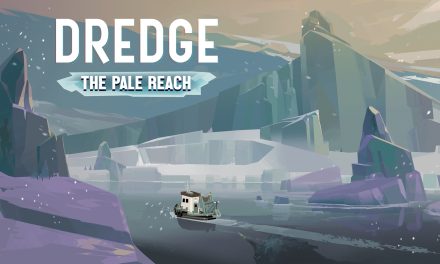Think about some of the best horror stories that you’ve heard. Most of those aren’t too terribly long. Definitely not long enough to make an entire movie out of. So what’s the course of action then? Well, in steps the anthology. Nowadays, anthology horror is pretty prevalent. You’ve got things like 50 States of Fright from Quibi, Shudder’s version of Creepshow, and even the updated version of The Twilight Zone. Turns out, through the years, you can still tell a good short horror story.
Some of my favorite stories on the internet are those posts about making a “two-sentence horror story”. They usually end up being pretty chilling. But they don’t have a lot of substance. Now that’s not to say that a lack of substance makes them bad. With Quibi’s 50 States of Fright, you get a tale from each State in the US. It’s a fantastic look into varying horror stories that are prevalent throughout our fifty states here in America.
It seems like the horror template for anthology waxes and wanes. In the mid 90’s we had somewhat of a golden age. I don’t count The X-Files as an anthology series, but some of the non-serialized episodes of that show felt like one. Beyond Belief: Fact or Fiction was another great one from the era. The crown jewel was obviously Tales From The Crypt. What goes into a great anthology series though? And why do they seem to work even better today?
It’s All About The Host For An Anthology Series

If you make an anthology series and you don’t have a kick-ass host, what’s the point? While the stories might not be about the host, you still need someone to properly set up the world for our short story. You could be lazy about it, and just have a voice-over. Think about the best anthology series over the course of history. What sticks out? The host. You might remember individual episodes for being excellent, but you mainly remember the host. The Twilight Zone had Rod Serling, Tales From The Crypt had the Cryptkeeper, and Are You Afraid Of The Dark had the Midnight Society.
Your anthology series can have the best stories possible, but if you don’t have a good host, you’re sunk.
Anthologies Are For All Ages
The main reason why I’m so drawn to anthology series is that they can be made for all ages. Shows like Goosebumps, Are You Afraid Of The Dark, and The Haunting Hour are all perfect starting points for kids and young adults to get into horror. If you don’t want to start off guns blazing with showing kids The Exorcist, A Nightmare On Elm Street, or Halloween, these types of shows are the just right amount of horror. In the 90’s kids were treated to a glut of these types of shows that I’m sure built many horror fans into what we have today.
It’s also an exercise for the best types of filmmakers. How do you make something scary for people if you can’t show blood, guts, gore, or jump scares? These shows might not be frightening for horror veterans, but depending on the story, they were incredibly terrifying for younger audiences. Why do you think these shows were on the air for so long and prove to be relevant even with today’s audiences? Because they work so well for all ages. For some, they’re an introduction, and for others, like me, they’re a portal into the past. Remembering what used to scare you and thinking about the things that do now, is a fun exercise.
Even The More “Adult” Anthology Films/Shows Are In High Demand

Go and look up a home video release for the series Freddy’s Nightmares. Do it. You know why you can’t find a good home video release? Because there isn’t one. Scream Factory, can you get on this one please?
That aside, that show showcased what you can do with a good anthology. If you make the host a recognizable character like Freddy Krueger, you get the bonus of more time with that character. At a certain point this was the case with the Cryptkeeper. But with Freddy’s Nightmares you had the extra aspect of making certain episodes about the origins of Freddy or even including him in the stories. It wasn’t much of the shows 44 episode run, but the best ones of the series involved Freddy and his story.
Shows like this showcase how many different horror narrative structure possibilities there are. You can make an entire episode that’s a different point of view of a famous story. What if “The Monkey’s Paw” was told from the point of view of the past owner of the paw.
Keep It Simple, Stupid
I’ve echoed this phrase in a lot of the Fright-A-Thon over the course of the almost month that it’s been going. In a lot of cases, horror franchises, stories, ideas, or shows try to make things more and more complex as they go on. What really makes anthology shows great is that they stories are often simple. They’re like campfire stories that you tell to your friends.
They don’t need to spawn multi-million dollar franchises, they’re just there to entertain and move on. Sometimes in horror, they get buckled underneath the weight of all the things that need to go into a story. What ends up happening is that we hearken back to the origins of a series. Why is Halloween considered the best of the franchise? Because it’s a simple story that wasn’t designed with the intent of a franchise. Why are these stories from anthology series so good? Because they’re just supposed to scare you.
Nothing more.
For more on Fright-A-Thon, horror, or any other general pop culture, make sure to check back to That Hashtag Show.



